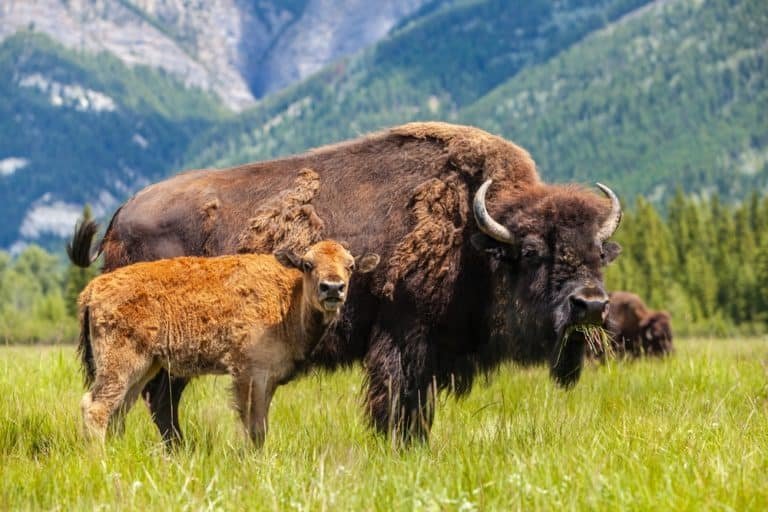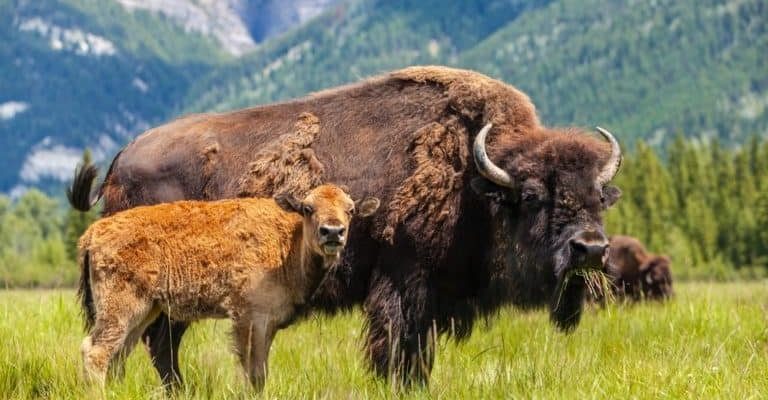
Imagine you’re sitting in a cozy café discussing the life of a bison with a friend. You’d probably start describing how these powerful herbivores navigate their environment, fueled by a diet that’s both simple yet crucial to their existence. It’s like building a house: the right materials are essential for a strong structure. For bison, those materials come from the grasses and plants around them. Let’s dive into their eating habits and how they fend for themselves in the wild!
Understanding the Bison Diet
Bison are classified as herbivores, which means their diet consists mainly of plants. However, they’re not picky eaters; they can consume a wide variety of vegetation. Their diet mainly includes:
- Grasses: This is the staple of their diet. Bison prefer tall grasses, especially during the spring and summer months when it’s most nutritious.
- Herbs: These small plants provide essential nutrients and variety to their diet.
- Shrubs and Trees: In tougher conditions, bison will nibble on bushes and bark, showing their adaptability.
When you think about it, bison are like nature’s lawnmowers, helping to manage grasslands. They graze in a way that promotes new growth by eating older plants. This not only benefits them but also supports the ecosystem, providing food for other animals.
Seasonal Changes and Diet
Interestingly, what bison eat can change dramatically with the seasons. In spring, when the grass is fresh and green, they consume large amounts of it. But as summer progresses, the grasses can become dry and less nutritious. Bison have learned to adapt by switching to other food sources. In winter, they dig through snow to find grass and can even eat woody plants. It’s like living in a buffet where the menu changes daily!
The Importance of Grazing Behavior
Bison are social animals and often graze in herds. This behavior is not just about companionship; it’s also a strategy for survival. Grazing in groups allows bison to be more efficient in finding food. Imagine a team solving a puzzle—you put your heads together and find the best pieces faster. Similarly, when bison graze together, they can cover more ground and locate the best grazing spots.
Additionally, being in a herd helps protect against predators. The more eyes there are watching out for danger, the safer they are. It’s a classic example of strength in numbers.
Impact on Their Habitat
The grazing habits of bison have a significant impact on their habitat, promoting biodiversity. Their feeding patterns help control plant growth, which creates a dynamic environment for other species to thrive. Without bison, certain grasses could become overgrown, leading to less variety in plant life, which in turn would affect other animals. This interconnectedness makes bison vital players in their ecosystems.
Hunting Strategies and Behavior
It might sound surprising, but bison don’t really hunt in the traditional sense. As herbivores, their main focus is on finding food rather than hunting other animals. However, they do have some interesting behaviors to avoid becoming prey themselves.
When threatened by predators like wolves or bears, bison can run at impressive speeds despite their massive size. They can reach speeds of up to 35 miles per hour! If a bison feels cornered, it will often use its strength and weight to fend off an attacker. Picture a linebacker charging through a defensive line—that’s the kind of power bison can unleash!
Group Defense Tactics
Bison often use their herd mentality to defend themselves. When confronted by predators, they will form a circle with the young and vulnerable in the middle. This strategy helps protect calves and encourages the cows to face the threat together. Think of them as a band of warriors standing shoulder to shoulder against an enemy. It allows for more effective defense and increases the odds of survival.
Adaptations for Survival
Bison have some remarkable adaptations that help them survive in harsh conditions. Their thick fur not only keeps them warm during the winter months but also helps insulate them against extreme cold. During the summer, they shed this thick coat, allowing them to stay cool.
Their strong digestive system is another fascinating adaptation. Bison have a specialized stomach that allows them to break down tough plant materials. This process is known as rumination, where they regurgitate food to chew it again, similar to how cows digest their food. It’s like getting a second chance at a delicious meal!
Environmental Challenges
Despite their adaptations, bison face challenges due to habitat loss and climate change. Changes in land use can limit their grazing areas and food availability. Conservation efforts are vital for ensuring that these majestic creatures can continue to thrive. Protecting bison is crucial, not just for them but for the entire ecosystem they support.
The diet and hunting strategies of bison are not just fascinating details of their biology; they’re also key to understanding their role in the ecosystem. Bison help maintain the health of grasslands, supporting a diversity of life. Their social behaviors and unique adaptations make them resilient creatures capable of surviving in tough conditions.
By learning about bison, we see how interconnected our ecosystems are. These gentle giants remind us of the delicate balance of nature and the importance of protecting their habitats. Next time you think of bison, remember they’re not just a pretty face on the plains; they’re vital players in the story of our environment.

